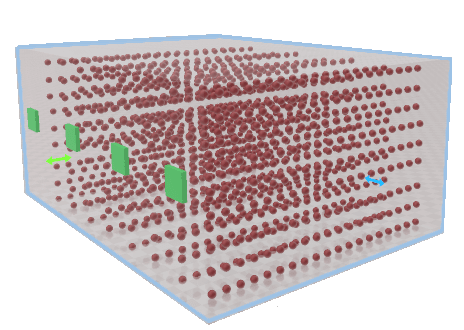I have the following scenario setup inside a rectangular metal container. The container size is 12.03m by 2.39m by 1.84m (lxbxh). Additionally, inside the container I have placed 4 antennas equally spaced, this is shown using the green squares (ignore the red dots/balls). The frequency of these antennas is 915MHz. I would like to know how the EM field behaves inside the container, such as where there will exit destructive interference and constructive interference?
In terms of interference from the other antennas, this will not be an issue due to only one antenna will be on for a given period. Basically the antennas are switched on and off in a periodic manner.

In terms of interference from the other antennas, this will not be an issue due to only one antenna will be on for a given period. Basically the antennas are switched on and off in a periodic manner.

